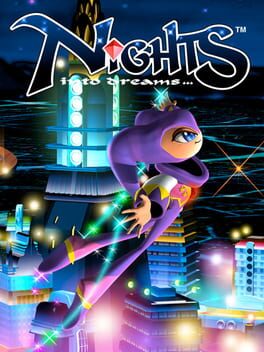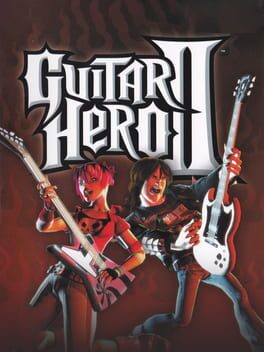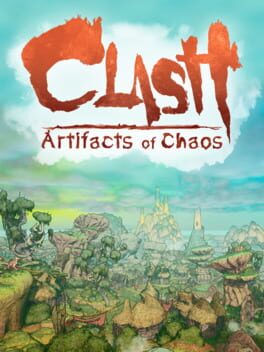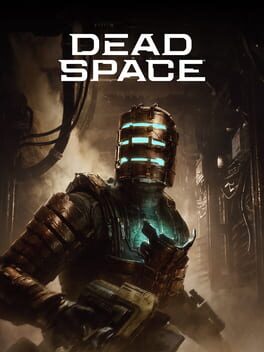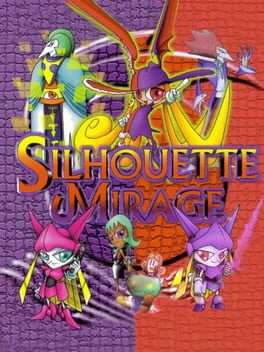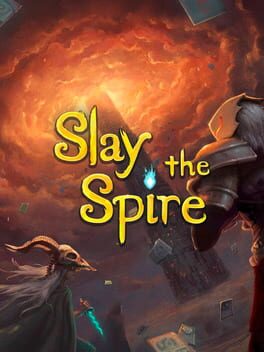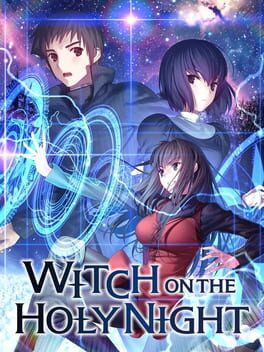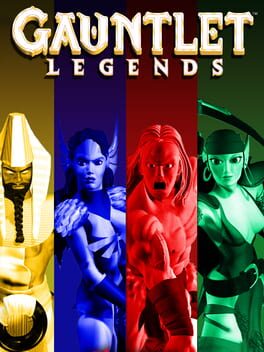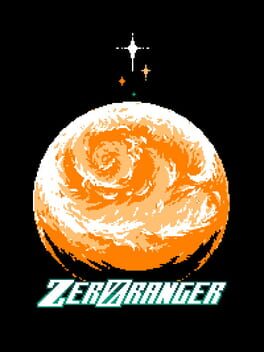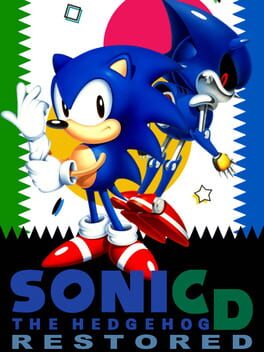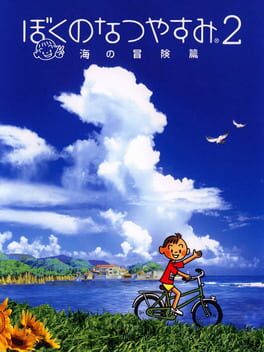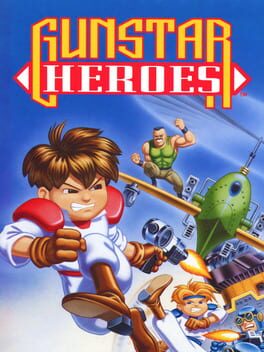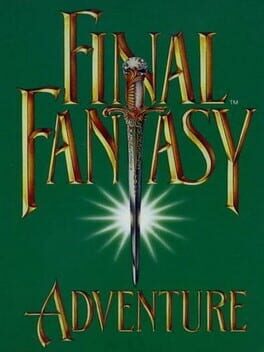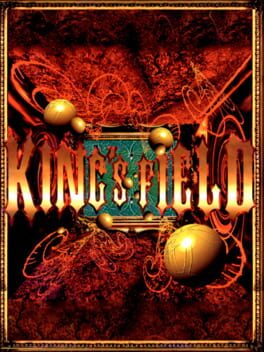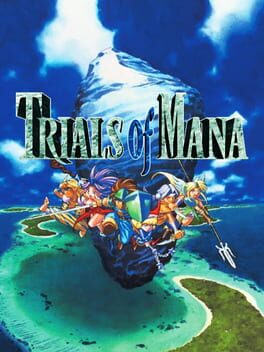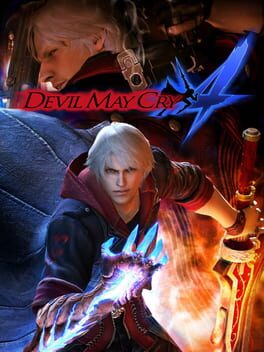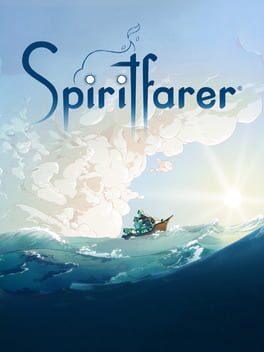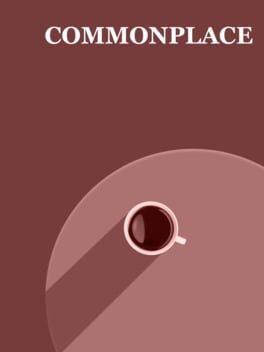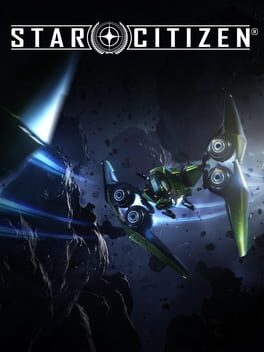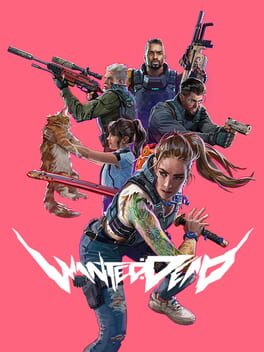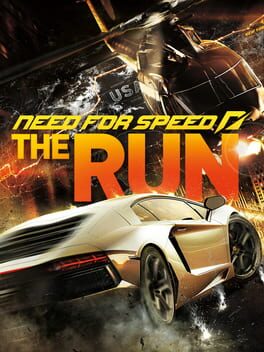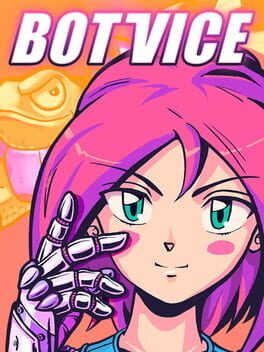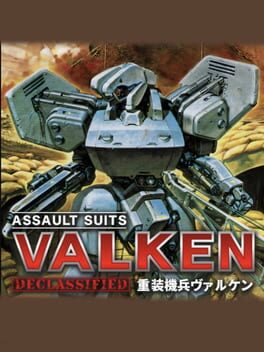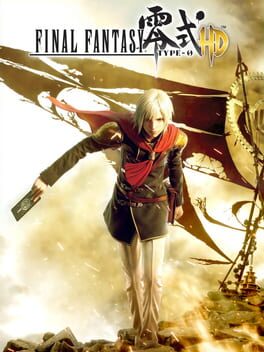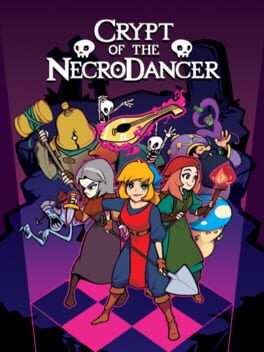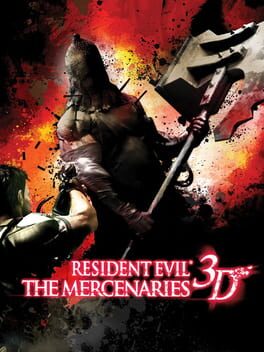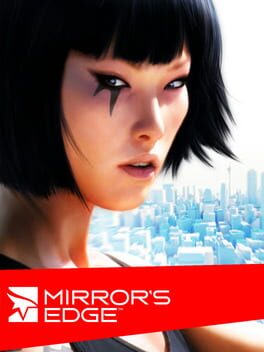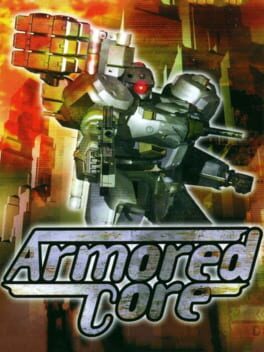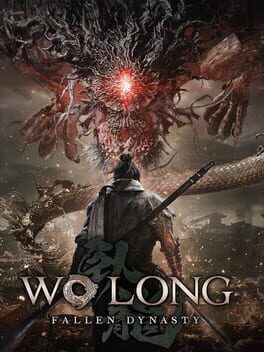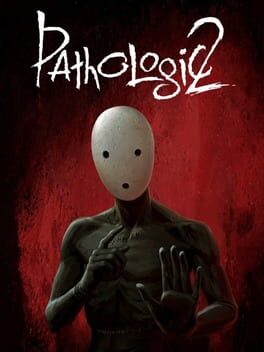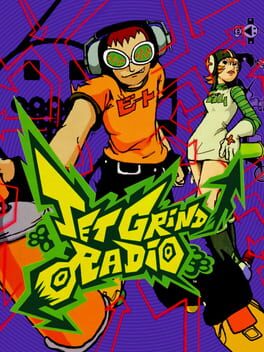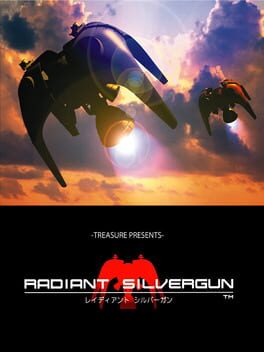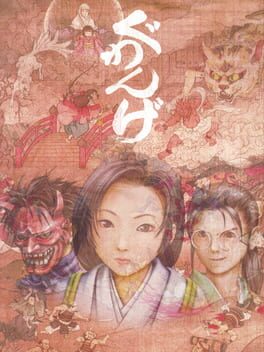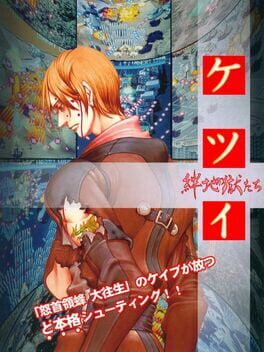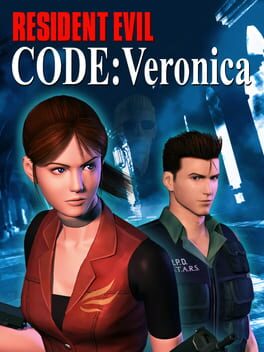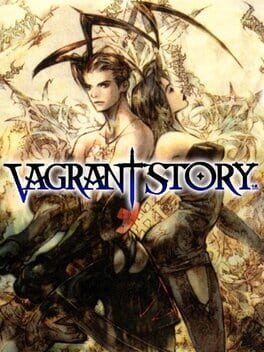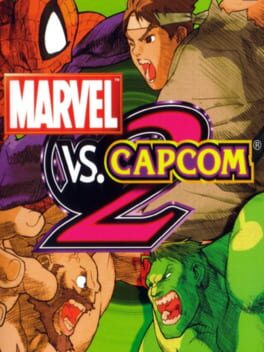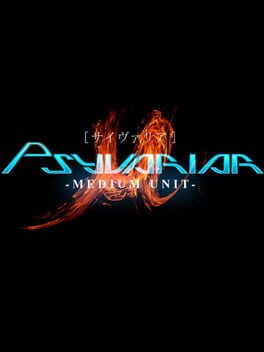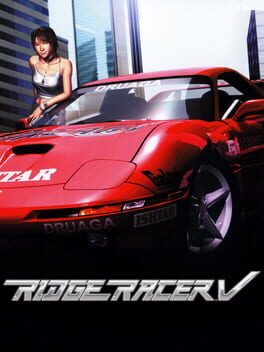Yeahlookiehere
1012 reviews liked by Yeahlookiehere
"I believe our role as game creators is to give dreams to children all over the world." - Yuji Naka
------------------------------------------------------------------------
NiGHTS: Into Dreams is a marvel of a game. Originally developed with the intent of being a 2D game with pixel art graphics with a strong emphasis on Artificial Life sim (A-Life) gameplay, development shifted drastically towards the game we know today. The game was, for all intents and purposes, an experiment: can Sonic Team make a 3D game on the Sega Saturn? What are the limitations, if they could? How can they show the player 3D depth on a 2D screen? Can they create polygonal characters that look as appealing as 2D pixel characters?
The answer was a resounding yes. NiGHTS became a unique title that showcased the potential of the Sega Saturn, demolishing the sales and becoming the top selling game on the system. Sonic Team managed to create a new IP, play around with new ideas, and recharge their creative batteries from creating three or four Sonic game for the past four to five years.
But the reality of NiGHTS's release was that the game was not enough of a draw for the Saturn. The American consumer base desired more of the blue blur, and during consumer questioning with the Japanese side, kids infamously could only mutter "Sonic who?" when asked who Sonic was. Sonic was Sega's face, and Sega's face went missing.
-----------------------------------------------------------------------
Between the cracks of the conscious and unconscious, there is a rift that trickles down to Nightopia. Windmills stand atop of pillars that hover aimlessly in the air, decorating the milky blue and purple skies like ornaments of a Christmas tree. Hills and valleys roll in a green mellow stream, spreading across every corner within the canvas of this dream. Sleep is a one way ticket to the carnival of dreams, performing all of humanity's unconscious thoughts and ideals in one place. NiGHTS is your guide, a being that's a culmination of every culture and gender, staving off the nightmares that infest the dreams of the collective unconscious, displaying as a hero amongst the self. Waking is your ticket back to reality, where you're left with your memories of that dream world, giving you the strength to reach out for your dreams in reality.
------------------------------------------------------------------------
Much like Sonic, NiGHTS is the king of fostering replayability. NiGHTS is essentially a prototype for the ranking system that would later be found in the Sonic Adventure series. Rank is based not how fast you proceed through a level, but more determined with the amount of points you received and orbs you collect throughout the allotted route. Each world is broken up by 4 routes, followed by a climatic boss fight to cap off your overall ranking. Mastering the game requires mastering a level's layout, learning the best way to acquire points and orbs, and optimizing your run to perfection. Your verbs are to loop, charge and fly to reach your goal, the motions in doing so feeling eloquent and refined like a figure skater's flow. This flow translates to gameplay and vice versa from one another.
The gameplay loop is addicting on an immediate level, and for me, has been more gratifying than playing and perfecting either SA1 or 2. The reason is simple: in Sonic, the qualifications to gain the best rank aren't actually clear with what the game is asking of you. Here in NiGHTS, it's 100% clear to me how I reach a better rank. The more points I wrack up, the better my rank.
For all of NiGHTS, there's a sense of clarity to the game design with how simplistic and creative it is. I'm not sure Sonic Team has ever quite reached such a level of clarity with their other projects.
------------------------------------------------------------------------
The world was passing me by so quickly. My surroundings were hard to really notice at a first glance, so I began to grow dissatisfied being unable to soak anything in. So, I did what I used to do when I was younger. I let myself get lost in the world.
The ground swerved and bent like an ocean's wave. These waves would envelop me from above and below me, closing me within this world like an open cavern. Walking felt weird, like at any given moment I'd start feeling heavy resistance from the sheer steepness of the terrain, but never did that heavy foot come. I wandered around, finding tiny creatures that would playfully smile, or laugh, or spin with glee.
The world felt still, in a way. Like this was the only moment that mattered. Thinking back on this, I felt like I once did when I was a kid. The world in front of me felt strange, new and a little scary. I didn't know what to expect from the game, and that within itself was such a refreshing experience.
------------------------------------------------------------------------
Despite the fact that NiGHTS started as an attempt to create an A-Life game, aspects are still found within the free range mode within NiGHTS. Before every level starts, you have the option to head directly towards NiGHTS, or to explore the entire level in full. Inhabiting these dreamscapes are tiny little creatures known as Pians, whom are born from eggs that you can find and hatch. These tiny little fairy men come in many shapes and sizes, and even come equipped with a full on breeding system. This system isn't as in-depth as the Chao system found within Sonic Adventure 1 and 2, but this mechanic adds a strange and needed element to the gameplay loop: a moment to relax.
Taking a break from the fast paced gameplay and simply exploring the world here creates a sense of exploration and discovery. There's details to this world that you're merely flying past in the main portion of the game, and being able to explore the same level from a completely different perspective is strangely freeing. Of course, the game doesn't want you to just running around collecting orbs for free, so they add in a slight pressure from an egg strapped with an alarm clock that chases you, along with a lower rank for the amount of time you've spent, so the game ends up being balanced with this approach. These open ended sections truly breathe life into the world of Nightopia.
-----------------------------------------------------------------------
Ethereal synths move and sway from ear to ear, samples of children saying hello and every day noises floating in-between them. The sound of a sax screeching in mimicry of an a monster screeching as a bombastic drum 'n' bass and a groovin' bass line kick into full gear. As credits roll, you're treated to the sweetest songs ever conceived.
"In the night.
Dream delight.
I want to see you standing there.
In the night.
Dream delight.
I found someone who really cared."
--------------------------------------------------------------------------
The Sega Saturn was considered a commercial failure. Sonic X-Treme was canceled, and there was no recovery from the lack of momentum. The Dreamcast was Sega's last shot to regain their market share and their consumer base. But too many mistakes were made. Sega closed down their console divisions for good.
Their dream was no more.
------------------------------------------------------------------------
As an adult, you don't really have the opportunity to meander. We hold off on leaving the living because there's too much to be done. Responsibilities need to be taken care of, work obligations need to be met. Life can come at you fast, and you can never be sure if the move you're making is the right move. What do I want to do? Who do I want to be? When will I wake up from my fear of rejection, my fear of agency? The idea can often paralyze me. There's more I could be doing, more I could be aspiring towards.
NiGHTS: Into Dreams reminds me that there isn't a need to overcomplicated. Sometimes all you need is to focus on something simple. Take a deep breath and wander. Take a break but get back to it.
----------------------------------------------------------------------
The quote at the beginning was given in an interview with Yuji Naka and developers of NiGHTS: Into Dream. You might cringe at the cheese spewing out of every orifice of the lettering as you read the text, but the words hold weight for me. Despite everything Yuji Naka has done in his career, despite how notoriously difficult he was to work with said by those around him, despite the potential cynical business centric reasoning for this quote, NiGHTS: Into Dreams still encapsulates the feeling of magic into me. The game filled me with a wonder I don't think many games ever have. Just for a moment, I felt like I was a kid again, exploring a new, unknown game for the first time, wondering what this strange new world had in store for me. There was nothing but smiles of joy on my face.
This is me by the way, if you even care.
------------------------------------------------------------------------
NiGHTS: Into Dreams is a marvel of a game. Originally developed with the intent of being a 2D game with pixel art graphics with a strong emphasis on Artificial Life sim (A-Life) gameplay, development shifted drastically towards the game we know today. The game was, for all intents and purposes, an experiment: can Sonic Team make a 3D game on the Sega Saturn? What are the limitations, if they could? How can they show the player 3D depth on a 2D screen? Can they create polygonal characters that look as appealing as 2D pixel characters?
The answer was a resounding yes. NiGHTS became a unique title that showcased the potential of the Sega Saturn, demolishing the sales and becoming the top selling game on the system. Sonic Team managed to create a new IP, play around with new ideas, and recharge their creative batteries from creating three or four Sonic game for the past four to five years.
But the reality of NiGHTS's release was that the game was not enough of a draw for the Saturn. The American consumer base desired more of the blue blur, and during consumer questioning with the Japanese side, kids infamously could only mutter "Sonic who?" when asked who Sonic was. Sonic was Sega's face, and Sega's face went missing.
-----------------------------------------------------------------------
Between the cracks of the conscious and unconscious, there is a rift that trickles down to Nightopia. Windmills stand atop of pillars that hover aimlessly in the air, decorating the milky blue and purple skies like ornaments of a Christmas tree. Hills and valleys roll in a green mellow stream, spreading across every corner within the canvas of this dream. Sleep is a one way ticket to the carnival of dreams, performing all of humanity's unconscious thoughts and ideals in one place. NiGHTS is your guide, a being that's a culmination of every culture and gender, staving off the nightmares that infest the dreams of the collective unconscious, displaying as a hero amongst the self. Waking is your ticket back to reality, where you're left with your memories of that dream world, giving you the strength to reach out for your dreams in reality.
------------------------------------------------------------------------
Much like Sonic, NiGHTS is the king of fostering replayability. NiGHTS is essentially a prototype for the ranking system that would later be found in the Sonic Adventure series. Rank is based not how fast you proceed through a level, but more determined with the amount of points you received and orbs you collect throughout the allotted route. Each world is broken up by 4 routes, followed by a climatic boss fight to cap off your overall ranking. Mastering the game requires mastering a level's layout, learning the best way to acquire points and orbs, and optimizing your run to perfection. Your verbs are to loop, charge and fly to reach your goal, the motions in doing so feeling eloquent and refined like a figure skater's flow. This flow translates to gameplay and vice versa from one another.
The gameplay loop is addicting on an immediate level, and for me, has been more gratifying than playing and perfecting either SA1 or 2. The reason is simple: in Sonic, the qualifications to gain the best rank aren't actually clear with what the game is asking of you. Here in NiGHTS, it's 100% clear to me how I reach a better rank. The more points I wrack up, the better my rank.
For all of NiGHTS, there's a sense of clarity to the game design with how simplistic and creative it is. I'm not sure Sonic Team has ever quite reached such a level of clarity with their other projects.
------------------------------------------------------------------------
The world was passing me by so quickly. My surroundings were hard to really notice at a first glance, so I began to grow dissatisfied being unable to soak anything in. So, I did what I used to do when I was younger. I let myself get lost in the world.
The ground swerved and bent like an ocean's wave. These waves would envelop me from above and below me, closing me within this world like an open cavern. Walking felt weird, like at any given moment I'd start feeling heavy resistance from the sheer steepness of the terrain, but never did that heavy foot come. I wandered around, finding tiny creatures that would playfully smile, or laugh, or spin with glee.
The world felt still, in a way. Like this was the only moment that mattered. Thinking back on this, I felt like I once did when I was a kid. The world in front of me felt strange, new and a little scary. I didn't know what to expect from the game, and that within itself was such a refreshing experience.
------------------------------------------------------------------------
Despite the fact that NiGHTS started as an attempt to create an A-Life game, aspects are still found within the free range mode within NiGHTS. Before every level starts, you have the option to head directly towards NiGHTS, or to explore the entire level in full. Inhabiting these dreamscapes are tiny little creatures known as Pians, whom are born from eggs that you can find and hatch. These tiny little fairy men come in many shapes and sizes, and even come equipped with a full on breeding system. This system isn't as in-depth as the Chao system found within Sonic Adventure 1 and 2, but this mechanic adds a strange and needed element to the gameplay loop: a moment to relax.
Taking a break from the fast paced gameplay and simply exploring the world here creates a sense of exploration and discovery. There's details to this world that you're merely flying past in the main portion of the game, and being able to explore the same level from a completely different perspective is strangely freeing. Of course, the game doesn't want you to just running around collecting orbs for free, so they add in a slight pressure from an egg strapped with an alarm clock that chases you, along with a lower rank for the amount of time you've spent, so the game ends up being balanced with this approach. These open ended sections truly breathe life into the world of Nightopia.
-----------------------------------------------------------------------
Ethereal synths move and sway from ear to ear, samples of children saying hello and every day noises floating in-between them. The sound of a sax screeching in mimicry of an a monster screeching as a bombastic drum 'n' bass and a groovin' bass line kick into full gear. As credits roll, you're treated to the sweetest songs ever conceived.
"In the night.
Dream delight.
I want to see you standing there.
In the night.
Dream delight.
I found someone who really cared."
--------------------------------------------------------------------------
The Sega Saturn was considered a commercial failure. Sonic X-Treme was canceled, and there was no recovery from the lack of momentum. The Dreamcast was Sega's last shot to regain their market share and their consumer base. But too many mistakes were made. Sega closed down their console divisions for good.
Their dream was no more.
------------------------------------------------------------------------
As an adult, you don't really have the opportunity to meander. We hold off on leaving the living because there's too much to be done. Responsibilities need to be taken care of, work obligations need to be met. Life can come at you fast, and you can never be sure if the move you're making is the right move. What do I want to do? Who do I want to be? When will I wake up from my fear of rejection, my fear of agency? The idea can often paralyze me. There's more I could be doing, more I could be aspiring towards.
NiGHTS: Into Dreams reminds me that there isn't a need to overcomplicated. Sometimes all you need is to focus on something simple. Take a deep breath and wander. Take a break but get back to it.
----------------------------------------------------------------------
The quote at the beginning was given in an interview with Yuji Naka and developers of NiGHTS: Into Dream. You might cringe at the cheese spewing out of every orifice of the lettering as you read the text, but the words hold weight for me. Despite everything Yuji Naka has done in his career, despite how notoriously difficult he was to work with said by those around him, despite the potential cynical business centric reasoning for this quote, NiGHTS: Into Dreams still encapsulates the feeling of magic into me. The game filled me with a wonder I don't think many games ever have. Just for a moment, I felt like I was a kid again, exploring a new, unknown game for the first time, wondering what this strange new world had in store for me. There was nothing but smiles of joy on my face.
This is me by the way, if you even care.
Desync
2017
Kind of interesting how much the space of these years were really into the sort of Tron/FC3 Blood Dragon Cyberspace. I think it's kind of "fun" in the way any cotton candy town can be appealing and enjoyable. Now on replay it hurts my eyes every so often, almost intentionally with its awful and absolutely dire random tv-crt cuts.
And that sums up the experience, awful every so often in a disappointing way. When the overall work grabs you it can be genuinely incredible, with desyncing enemies and comboing sequences together to become an absolute fast-and-furious powerhouse that demolishes through tactile precision and great understandings of your gunplay fundamentals. Things like blowing up a stage bomb to turn a few slashing enemies into projectiles that you've conveniently pushed towards an increasingly large shuriken, getting a particular bonus you set up ahead of time, to then use the new speed to rocket up another set of enemies that you then laser point-blank underneath their hides for ANOTHER bonus.
And then the encounter is already over.
What?
Yeah, the game is honestly way too forgiving, way too easy. It's so afraid of throwing particular enemy combos at you or putting too much on you that even its second boss fight will go invulnerable and just stand there staring at you while you take care of a poultry wave first. The real meat is in its aberration challenges, but those kind of pull apart having your own "sandbox" to combo enemies in favor of a pre-determined affair. Which I do personally prefer, but it means that about 3/4 of whatever setup you do with the menuing means nothing if the weapons are different.
But, when you've accustomed to the game's own rhythm, they provide the closest Desync gets to pulling you apart in a very engaging way. When these hardmode levels take away your dash and force you to tactfully make your kills to get back HP before your meter runs out. When you're playing a weird game of "keep-away" with weapons that require getting at least a bit close to do proper damage, because the enemies now decided to explode on overkill. When you've got one hit to your name and a host of smaller enemies swarming on you and there's only ONE way you can stagger them to do damage in the first place.
It all helps that at the end of the day this is a very fun frictional shooter, with devs at a midway point where they don't give a shit what you think but also graft on a rpg-your-weapon modifications because that's a thing now. It's a team that lets you be able to make the final boss a multi-enemy one of your own volition and say "deal with it", and has the least accessibility for its nauseating interface. The moniker "adult swim games" has great meaning here, and that's pretty cool.
And that sums up the experience, awful every so often in a disappointing way. When the overall work grabs you it can be genuinely incredible, with desyncing enemies and comboing sequences together to become an absolute fast-and-furious powerhouse that demolishes through tactile precision and great understandings of your gunplay fundamentals. Things like blowing up a stage bomb to turn a few slashing enemies into projectiles that you've conveniently pushed towards an increasingly large shuriken, getting a particular bonus you set up ahead of time, to then use the new speed to rocket up another set of enemies that you then laser point-blank underneath their hides for ANOTHER bonus.
And then the encounter is already over.
What?
Yeah, the game is honestly way too forgiving, way too easy. It's so afraid of throwing particular enemy combos at you or putting too much on you that even its second boss fight will go invulnerable and just stand there staring at you while you take care of a poultry wave first. The real meat is in its aberration challenges, but those kind of pull apart having your own "sandbox" to combo enemies in favor of a pre-determined affair. Which I do personally prefer, but it means that about 3/4 of whatever setup you do with the menuing means nothing if the weapons are different.
But, when you've accustomed to the game's own rhythm, they provide the closest Desync gets to pulling you apart in a very engaging way. When these hardmode levels take away your dash and force you to tactfully make your kills to get back HP before your meter runs out. When you're playing a weird game of "keep-away" with weapons that require getting at least a bit close to do proper damage, because the enemies now decided to explode on overkill. When you've got one hit to your name and a host of smaller enemies swarming on you and there's only ONE way you can stagger them to do damage in the first place.
It all helps that at the end of the day this is a very fun frictional shooter, with devs at a midway point where they don't give a shit what you think but also graft on a rpg-your-weapon modifications because that's a thing now. It's a team that lets you be able to make the final boss a multi-enemy one of your own volition and say "deal with it", and has the least accessibility for its nauseating interface. The moniker "adult swim games" has great meaning here, and that's pretty cool.
Guitar Hero II
2006
Estimated read time: 6~ minutes.
I have terrible rhythm—I can synchronize, but that's about it—but I love this game. I practically can't beat Rhythm Heaven (might dive into that at some point), but I adore these tours and subpar live recording album-tier covers with completely nonsense maps that make the guitar play the piano, horns, etc.; not because it makes sense but because it's simply fun.
The intro goes incredibly hard. I think it perfectly represents the series as a whole. Even though Guitar Hero III is widely considered the best by a decent margin, I’m partial to II for its crust. Although one very nice feature starting here was they realized people were buying various types of RPTVs and plasmas, so they implemented a calibration screen to make the game playable in the new era of TVs with high latency (40+ms!!).
I’ve always had stage fright, particularly if it ever involved singing. Despite that, I walk through those venue doors, nervous and frankly embarrassed; social anxiety is a bitch. But my love was secretly listening to hard rock, metal, prog rock and metal, maybe a bit of trance here ‘n’ there. I Am here to enjoy some fucking music, meet fellow musicians, and hopefully grow as one.
You know what I found, though?
The fakest fuckers on the planet lamenting about not being popular enough or whatever. "What about me?" What about you? Another cold burnout song about how much everyone else sucks? Wow, how revelatory, you really shook up the scene today. I'm sure we'll quake in our boots at the idea of your sniggering, side-eyeing, nonchalant disregard and elitism leaving the venue and being laid to rest. I just want to play Guitar Hero for God’s sake!
Do you even understand fun? Talking about playing for the music, the esoterica and innate joy of it all, but it sure doesn't seem like it, not unless it's doing literally the same thing you decry the rest of the bands of doing: low effort punk rock with a bit of crass lyrics in there poisoned with irony, but then you make it worse by painting it with the veneer of artistic understanding and passion. Where is it? You seem content to hide it all up in a little heart-shaped box you’ve deemed only your little act worthy of being privy to.
Also, did you really have to do all that at karaoke night? Unplugging the amp and making a speech about it? Telling people they just don't get it and aren't singing for the right reasons? That punk night is dead! Do you even hear yourself? It's just some karaoke; get over yourself.
Go do your own tour or whatever; literally nobody asked you to leave, but I bet you’ll pretend you were kicked to the curb anyways. Showered in praise, yet you hyper-fixate on a couple of dissenters that pop up throughout the year? Who cares! The next set’s about to be played!
You were never here for the music, and it's no wonder you're completely and utterly obsessed with eras you were barely sentient for, or worse, not even around for. You can't get over the fact that time marches forward without you, someone new showing up one day and curb stomping you at your own act; it's humbling, but rather than take it on stride, you grimace, forcing a pained smile as you pat them on the back for performing so well. But it's clear that this was a massive blow to your ego. Maybe you can convince yourself it doesn't hurt so much if you only care about your fellow burnouts quitting emo and declaring the rest of the venue a madhouse.
It hurts, because I thought your act was pretty cool. I guess it’s pretty “punk rock” to jeer and give the cold shoulder though, right? Maybe it’s in spirit, maybe it’s hypocritical of me, whatever.
Throughout my musical journey it’s been nothing but revitalizing, igniting the flame once more for the medium I held so dear. I was berated and constantly mocked for my love of music, especially metal, combined with curve balls left and right, losing loved ones (or what few I would call those), I became very disillusioned with how people behave. It was branching out and stepping out of my comfort zone, keeping my chin up even in the face of pretentious acts that my love for music only grew more. Yeah, it sucked that some of my favorite bands became increasingly misanthropic, but why should that stop me? Why should it stop any of us? It was never about those assholes; it was about the music- their words, not mine. Well, their words until it was just about themselves. I’ll stop now, I’ve got a set to play whether or not people show up. It’ll probably be mediocre! I don’t care.
Punk rock never died. Don’t let the door hit you on the way out.
Goodnight.
Favorite track: The Sword - Freya
Unrelated music highlight: The Mothers of Invention (Live in London, ‘68)
I have terrible rhythm—I can synchronize, but that's about it—but I love this game. I practically can't beat Rhythm Heaven (might dive into that at some point), but I adore these tours and subpar live recording album-tier covers with completely nonsense maps that make the guitar play the piano, horns, etc.; not because it makes sense but because it's simply fun.
The intro goes incredibly hard. I think it perfectly represents the series as a whole. Even though Guitar Hero III is widely considered the best by a decent margin, I’m partial to II for its crust. Although one very nice feature starting here was they realized people were buying various types of RPTVs and plasmas, so they implemented a calibration screen to make the game playable in the new era of TVs with high latency (40+ms!!).
I’ve always had stage fright, particularly if it ever involved singing. Despite that, I walk through those venue doors, nervous and frankly embarrassed; social anxiety is a bitch. But my love was secretly listening to hard rock, metal, prog rock and metal, maybe a bit of trance here ‘n’ there. I Am here to enjoy some fucking music, meet fellow musicians, and hopefully grow as one.
You know what I found, though?
The fakest fuckers on the planet lamenting about not being popular enough or whatever. "What about me?" What about you? Another cold burnout song about how much everyone else sucks? Wow, how revelatory, you really shook up the scene today. I'm sure we'll quake in our boots at the idea of your sniggering, side-eyeing, nonchalant disregard and elitism leaving the venue and being laid to rest. I just want to play Guitar Hero for God’s sake!
Do you even understand fun? Talking about playing for the music, the esoterica and innate joy of it all, but it sure doesn't seem like it, not unless it's doing literally the same thing you decry the rest of the bands of doing: low effort punk rock with a bit of crass lyrics in there poisoned with irony, but then you make it worse by painting it with the veneer of artistic understanding and passion. Where is it? You seem content to hide it all up in a little heart-shaped box you’ve deemed only your little act worthy of being privy to.
Also, did you really have to do all that at karaoke night? Unplugging the amp and making a speech about it? Telling people they just don't get it and aren't singing for the right reasons? That punk night is dead! Do you even hear yourself? It's just some karaoke; get over yourself.
Go do your own tour or whatever; literally nobody asked you to leave, but I bet you’ll pretend you were kicked to the curb anyways. Showered in praise, yet you hyper-fixate on a couple of dissenters that pop up throughout the year? Who cares! The next set’s about to be played!
You were never here for the music, and it's no wonder you're completely and utterly obsessed with eras you were barely sentient for, or worse, not even around for. You can't get over the fact that time marches forward without you, someone new showing up one day and curb stomping you at your own act; it's humbling, but rather than take it on stride, you grimace, forcing a pained smile as you pat them on the back for performing so well. But it's clear that this was a massive blow to your ego. Maybe you can convince yourself it doesn't hurt so much if you only care about your fellow burnouts quitting emo and declaring the rest of the venue a madhouse.
It hurts, because I thought your act was pretty cool. I guess it’s pretty “punk rock” to jeer and give the cold shoulder though, right? Maybe it’s in spirit, maybe it’s hypocritical of me, whatever.
Throughout my musical journey it’s been nothing but revitalizing, igniting the flame once more for the medium I held so dear. I was berated and constantly mocked for my love of music, especially metal, combined with curve balls left and right, losing loved ones (or what few I would call those), I became very disillusioned with how people behave. It was branching out and stepping out of my comfort zone, keeping my chin up even in the face of pretentious acts that my love for music only grew more. Yeah, it sucked that some of my favorite bands became increasingly misanthropic, but why should that stop me? Why should it stop any of us? It was never about those assholes; it was about the music- their words, not mine. Well, their words until it was just about themselves. I’ll stop now, I’ve got a set to play whether or not people show up. It’ll probably be mediocre! I don’t care.
Punk rock never died. Don’t let the door hit you on the way out.
Goodnight.
Favorite track: The Sword - Freya
Unrelated music highlight: The Mothers of Invention (Live in London, ‘68)
Reports of the mid-budget game’s death have been greatly exaggerated. They’re generally now something you have to more actively be on the lookout for, but there are still plenty of them with all the same hallmarks cynics’d have you believe we don’t get anymore – navigation by way of unique geographical landmarks as opposed to UI widgets, obtuse systems you only learn the inner workings of by throwing yourself into the deep end, visual design and mechanics strange enough to ward off the easily disoriented and more. Few games in recent memory exemplify it all better than this.
While that clip works a rough vertical slice of what you can expect from Clash’s combat, its little nuances aren’t immediately obvious at a glance. The way its blocking system works feels especially distinctive from other action games with parries, temporarily slowing down the enemy you block almost like a localised version of Witch Time, but key to the balance it strikes between complexity and accessibility is how it lets you cancel any light punch at any point into one of a special attack, jump or dodge. It’s a narrow but malleable core which enables a bunch of playstyles simultaneously; you can help speed along Zenozoik’s death by manipulating these mechanics to absolutely wombo combo its denizens, be less committal and whittle them down while dodging away and luring them into each other’s attacks, focus on filling Pseudo’s attack gauge to spend as much time in his superpowered first person mode as possible or take any number of other approaches. Chuck in unlockable combat styles you can find through exploration (complementing its revamped, Bloodborne-inspired level design) alongside some light moveset customisation and you’ve got the type of game you’ll be reloading saves before boss encounters just to replay them differently, this all being before you get into modifiers brought about by the Ritual.
This is essentially an in-universe dice game that you can challenge bosses to before the fisticuffs start, during which the pair of you offer up an artifact to either somehow alter the fighting area, debuff one’s opponent or introduce some other advantage to one’s side depending on who has the most dice remaining by the end. The effects can get pretty creative, thick fog rolling in and obscuring your vision in exchange for causing enemies to swing blindly at whatever’s nearby being a suitably chaotic standout, though my favourite has to be the paired Pact and Summon artifacts. Winning the Ritual with the former active lets you store the boss you’ve beaten as an ally which you can then summon to help you by upon winning a second game with the latter equipped – if you stack up enough of both, you can essentially turn an unusual beat ‘em up into an even more unusual version of Pokemon, pitting cannibalistic mushroom men against tripedal bright blue elk with faces growing out of their chests and all manner of other weird and wonderful mercenaries I’ve no idea how these guys’ concept artists dreamt up. It does sometimes feel tedious that there’s no way to forfeit the Ritual once you’ve challenged someone to it, but it’s a worthwhile exchange for the sheer variation it enables in combat encounters. It’s everything I mentioned in the first paragraph dialled up to 11, fostered by an almost totally optional minigame. How cool is that?
I’m already predisposed to love any fictional world conceptually bizarre enough to feature something like this as its sole governing law, but it helps that it’s got the art direction to match. It’s one thing to be able to point your camera anywhere in a game and have a new wallpaper on your hands, another entirely both to craft such a genuinely alien environment and render it consistently readable without anything resembling objective markers. It’s perplexion with a purpose: it’d have been much easier to just let the player’s map or some other immersion breaking visual cue do all the thinking for them, but instead, the environmental artists and modellers gave it their all and went the extra mile to make this nutcase’s fever dream a believable place you’re expected to organically learn the lay of. Their creativity even benefits the enemy design in a way – certain opponents not having a particularly big or varied moveset is offset at least a bit by how you can never really be sure how something as uncanny as a technicolour lion with the face of an elderly man (for example) is going to attack. It easily joins hands with Bayonetta Origins and Inkulinati on the podium of some of 2023’s most unique visual design, none of which received any industry recognition in this regard because why would those with large platforms ever try to raise awareness of anything actually interesting?
How or why any given game flies under the radar varies too much to pin it on a singular cause, it’s just a particular shame that it’s happened in this case because of the extent to which Clash is stuffed with things people commonly claim to want. It might sound like a hodgepodge of disparate ideas when you’re just reading about it, but to me there are clear throughlines connecting all of its esoteric mechanics, outlandish art, intimidatingly loopy level design and litany of music I can’t do justice to with words – a willingness to be different and respect for the player’s intelligence. You can only put so much stock into how a game’s number of plays correlates to its actual popularity on a site where Gravity Rush 2 has more than Starcraft and Minecraft has only about three times as many as a Yakuza game, but only managing double digits even in a place of relative enthusiasts wouldn’t seem to bode well for its prospects (or, at least, as well as something with these traits deserves).
That’s why I challenge you, whoever’s reading this, by the One Law: please take a chance on this game you may have missed. They don’t make them like this anymore, except when they do! And when they do, you’ll be reminded of how much we could still do with more games like it.
While that clip works a rough vertical slice of what you can expect from Clash’s combat, its little nuances aren’t immediately obvious at a glance. The way its blocking system works feels especially distinctive from other action games with parries, temporarily slowing down the enemy you block almost like a localised version of Witch Time, but key to the balance it strikes between complexity and accessibility is how it lets you cancel any light punch at any point into one of a special attack, jump or dodge. It’s a narrow but malleable core which enables a bunch of playstyles simultaneously; you can help speed along Zenozoik’s death by manipulating these mechanics to absolutely wombo combo its denizens, be less committal and whittle them down while dodging away and luring them into each other’s attacks, focus on filling Pseudo’s attack gauge to spend as much time in his superpowered first person mode as possible or take any number of other approaches. Chuck in unlockable combat styles you can find through exploration (complementing its revamped, Bloodborne-inspired level design) alongside some light moveset customisation and you’ve got the type of game you’ll be reloading saves before boss encounters just to replay them differently, this all being before you get into modifiers brought about by the Ritual.
This is essentially an in-universe dice game that you can challenge bosses to before the fisticuffs start, during which the pair of you offer up an artifact to either somehow alter the fighting area, debuff one’s opponent or introduce some other advantage to one’s side depending on who has the most dice remaining by the end. The effects can get pretty creative, thick fog rolling in and obscuring your vision in exchange for causing enemies to swing blindly at whatever’s nearby being a suitably chaotic standout, though my favourite has to be the paired Pact and Summon artifacts. Winning the Ritual with the former active lets you store the boss you’ve beaten as an ally which you can then summon to help you by upon winning a second game with the latter equipped – if you stack up enough of both, you can essentially turn an unusual beat ‘em up into an even more unusual version of Pokemon, pitting cannibalistic mushroom men against tripedal bright blue elk with faces growing out of their chests and all manner of other weird and wonderful mercenaries I’ve no idea how these guys’ concept artists dreamt up. It does sometimes feel tedious that there’s no way to forfeit the Ritual once you’ve challenged someone to it, but it’s a worthwhile exchange for the sheer variation it enables in combat encounters. It’s everything I mentioned in the first paragraph dialled up to 11, fostered by an almost totally optional minigame. How cool is that?
I’m already predisposed to love any fictional world conceptually bizarre enough to feature something like this as its sole governing law, but it helps that it’s got the art direction to match. It’s one thing to be able to point your camera anywhere in a game and have a new wallpaper on your hands, another entirely both to craft such a genuinely alien environment and render it consistently readable without anything resembling objective markers. It’s perplexion with a purpose: it’d have been much easier to just let the player’s map or some other immersion breaking visual cue do all the thinking for them, but instead, the environmental artists and modellers gave it their all and went the extra mile to make this nutcase’s fever dream a believable place you’re expected to organically learn the lay of. Their creativity even benefits the enemy design in a way – certain opponents not having a particularly big or varied moveset is offset at least a bit by how you can never really be sure how something as uncanny as a technicolour lion with the face of an elderly man (for example) is going to attack. It easily joins hands with Bayonetta Origins and Inkulinati on the podium of some of 2023’s most unique visual design, none of which received any industry recognition in this regard because why would those with large platforms ever try to raise awareness of anything actually interesting?
How or why any given game flies under the radar varies too much to pin it on a singular cause, it’s just a particular shame that it’s happened in this case because of the extent to which Clash is stuffed with things people commonly claim to want. It might sound like a hodgepodge of disparate ideas when you’re just reading about it, but to me there are clear throughlines connecting all of its esoteric mechanics, outlandish art, intimidatingly loopy level design and litany of music I can’t do justice to with words – a willingness to be different and respect for the player’s intelligence. You can only put so much stock into how a game’s number of plays correlates to its actual popularity on a site where Gravity Rush 2 has more than Starcraft and Minecraft has only about three times as many as a Yakuza game, but only managing double digits even in a place of relative enthusiasts wouldn’t seem to bode well for its prospects (or, at least, as well as something with these traits deserves).
That’s why I challenge you, whoever’s reading this, by the One Law: please take a chance on this game you may have missed. They don’t make them like this anymore, except when they do! And when they do, you’ll be reminded of how much we could still do with more games like it.
Dead Space
2023
Inessential.
Despite the many quality-of-life changes meant to bring this more in line with the rest of the series, like updating the Zero-G sections and letting you use your kinesis more offensively, the broad strokes of the game are surprisingly close to the original. A change I was really looking forward to was the “Intensity Director” which is meant to dynamically alter the mood of areas and what enemies will spawn, but in practice, this mostly seems to determine whether or not you’ll get ambushed while backtracking instead of radically altering the major combat encounter. It’s a nice thrill to occasionally get surrounded by enemies, but as with so many of the new features of the remake, it doesn’t wholly commit to this idea, more a proof-of-concept that could be really transformative if it was expanded on somewhere else. Basic Necromorphs are also substantially less threatening due to the fact that it’s surprisingly easy to stunlock them by stomping on them once their legs have been shot out, and for the sheer effectiveness of these newly revamped kinesis powers (encounters and the ammo economy needed to be dramatically changed to make threats meaningful the player).
Given that this production seems to owe so much to the success of the recent Resident Evil remakes, I wish it would’ve taken a cue from them and include some bolder pieces of design and pacing- throw in an extra Regenerator fight, change the order of levels, or go all the way and pull the best enemies from the entire series to give these fights an extra edge. There are earnest discussions to be had about what function the RE remakes serve (if they’re replacements or reimaginings) but at least they’re distinct- I’m compelled to go back to them from time to time!
Really, I think the hesitance to change to radically alter the structure and encounter design speaks to the real intent of this remake, which seems far more interested in making the narrative flow more seamlessly between this and Dead Space 2. Isaac Clarke more or less had to be invented as a character in the sequel, and that made the amount of screentime that was devoted to his guilt over Nicole all the more weightless- retconned baggage that hardly landed. The attempt to expand their relationship mostly works, the revelations here about how their relationship ended are much better about setting the groundwork for their arc in the sequel. For as strong as this dynamic, it seems to have come at the cost of much of the supporting cast; compared to their original versions, everyone on the Ishimura comes as the lifeless versions of themselves. Dr. Kyne and Dr. Mercer were amazing presences thanks to great performances by Keith Szarabajka and Navid Negahban respectively, but without that prior context, I’m not sure these new iterations of the characters will stay in the minds of those who’ve only played the remake.
The biggest sin is that the remake ends up being dreadfully boring to play through in practice, the threats so similar to the original that the horror doesn’t land and the action so easy to break that it actively feels like a regression from the constraints of the earlier version of combat design. There’s obvious passion for the project here, especially in some of the granular details, but seemingly not the broader vision needed to successfully combine the old and new ideas together.
Despite the many quality-of-life changes meant to bring this more in line with the rest of the series, like updating the Zero-G sections and letting you use your kinesis more offensively, the broad strokes of the game are surprisingly close to the original. A change I was really looking forward to was the “Intensity Director” which is meant to dynamically alter the mood of areas and what enemies will spawn, but in practice, this mostly seems to determine whether or not you’ll get ambushed while backtracking instead of radically altering the major combat encounter. It’s a nice thrill to occasionally get surrounded by enemies, but as with so many of the new features of the remake, it doesn’t wholly commit to this idea, more a proof-of-concept that could be really transformative if it was expanded on somewhere else. Basic Necromorphs are also substantially less threatening due to the fact that it’s surprisingly easy to stunlock them by stomping on them once their legs have been shot out, and for the sheer effectiveness of these newly revamped kinesis powers (encounters and the ammo economy needed to be dramatically changed to make threats meaningful the player).
Given that this production seems to owe so much to the success of the recent Resident Evil remakes, I wish it would’ve taken a cue from them and include some bolder pieces of design and pacing- throw in an extra Regenerator fight, change the order of levels, or go all the way and pull the best enemies from the entire series to give these fights an extra edge. There are earnest discussions to be had about what function the RE remakes serve (if they’re replacements or reimaginings) but at least they’re distinct- I’m compelled to go back to them from time to time!
Really, I think the hesitance to change to radically alter the structure and encounter design speaks to the real intent of this remake, which seems far more interested in making the narrative flow more seamlessly between this and Dead Space 2. Isaac Clarke more or less had to be invented as a character in the sequel, and that made the amount of screentime that was devoted to his guilt over Nicole all the more weightless- retconned baggage that hardly landed. The attempt to expand their relationship mostly works, the revelations here about how their relationship ended are much better about setting the groundwork for their arc in the sequel. For as strong as this dynamic, it seems to have come at the cost of much of the supporting cast; compared to their original versions, everyone on the Ishimura comes as the lifeless versions of themselves. Dr. Kyne and Dr. Mercer were amazing presences thanks to great performances by Keith Szarabajka and Navid Negahban respectively, but without that prior context, I’m not sure these new iterations of the characters will stay in the minds of those who’ve only played the remake.
The biggest sin is that the remake ends up being dreadfully boring to play through in practice, the threats so similar to the original that the horror doesn’t land and the action so easy to break that it actively feels like a regression from the constraints of the earlier version of combat design. There’s obvious passion for the project here, especially in some of the granular details, but seemingly not the broader vision needed to successfully combine the old and new ideas together.
Silhouette Mirage
1997
On Saturn there's Guardian Heroes and Radiant Silvergun, both games I've always really liked and immediately got the hang of.
And then there's this game...
My first time playing this I felt like I was fighting the game mechanics, I often felt like I was missing something.
I really struggled my way through this game, brute forcing my way to the end while throwing away multiple continues. I didn't understand why it couldn't just be a straightforward run-&-gun or action platformer, it seemed like the added mechanics just got in the way.
It was so frustrating and exhausting to play. I just saw it as the one weak link in the developer's history.
And so this game just sat on my shelf for many years and I'd always remember it as that weird mediocre treasure game.
Only now after coming back to it years later and finally understanding how to play it I feel qualified to write this review.
Silhouette Mirage comes from a developer that is most known for out-of-the-box ideas and experimental game design, and this is one of their games that pushes things even further than usual.
Silhouette Mirage is a misunderstood game, and I also misunderstood it.
This game is deceptively esoteric and deceptively genious. So much so that it took many playthroughs before I finally "got it"
Silhouette Mirage has a color polarity system but the player can't just easily change color at the press of a button you have to face left or right, it's the kind of idea that seems arbitrary and unique for the sake of being unique at first. It's easy to write the mechanics of this game off as shallow the game can almost feel mechanically confused, but the truth is that it isn't just a gimmick, most mechanics are deep and thoughtfully designed.
That's how the game is deceptive, before I really learned the deeper skills and mechanics I assumed that jumping over enemies and trying to move around them was a effective way to play, instead it's all about manipulating and forcing enemies into places where they are at a disadvantage, in other words move the enemy not yourself. It's counter-intuitive to the the way most games would go about something like this. There's a lot of depth to this idea, and it does work in practice once it's properly understood. Many of the bosses in the game feel the same way, before I understood their gimmick, patterns, or weakness they seem tedious and unfair but now they're fun to fight and a reasonable challenge. It's a huge contrast in difficulty all coming from the mechanics themselves. Nothing about Silhouette Mirage is minimal or simple.
This is primarily a run-and-gun game, but it feels a lot like a beat-em-up in some aspects with how spacing is used, it's really important to navigate around enemies and push them into place to control the situation.
You can shoot enemies with the same color and it won't do damage, it might seem like a waste but what this actually does is drain their energy, my first time playing I didn't understand the utility of this and only tried to damage them, it's really important to drain some enemies of all their power first.
It's a really clever layer added to this mechanic, instead of just aggressively attacking everything the game has a focus on disarming your opponent first, so you can get in closer and deal heavier damage. The game prioritizes defense and patience in a really unique way there's not really any run-and-gun game that does things like this. Silhouette is certainly no Contra or Metal Slug, you can't just run in and blast away groups of enemies.
Once an enemy or boss is disarmed they usually have no attacks they can do anymore leaving them open to being grabbed, you can grab and thow almost any enemy and boss which is important for controlling the battle and spacing, but the player can punch money out of enemies and bosses while grabbing them.
This leads to some grinding for shops where you can buy healing items and upgrade weapons, it's essential to have a chance against harder bosses later into the game, there's another layer of resource management added to everything that's already going on here.
It's a lot to keep track of and will keep the majority of players from enjoying it. This is definitely not a game for everyone, I think it has a niche appeal. It's a very demanding, complicated, and punishing action game.
As well as everything works and how well planned and developed many aspects of the game are, there are some serious problems that skill alone can't fix.
My first time actually getting to the final level of the game I was experimenting with weapons and ended up stuck with the Bomb weapon named Angara, the massive problem with this is that Angara can only hit ground targets, you see the final few bosses are exclusively airborne... I could not hit them, I had no chance. My entire playthrough ended right there at no real fault of my own, because the weapon system is so under-developed and unbalanced. The game can be very frustrating like this and not in a satisfying way, there's a smoke/toxic weapon and a targeting homing shot that both take too much setup when you could just get much higher DPS with anything else and worst of all weapons give enemies knockback. This is no issue with the standard shot, Laser, or boomerang, but the rest just hit once launching the enemy away while the rest of the attack misses.
There's no reason not to just use half the weapons.
If I had to pick out the most significant weakness from Treasure as a developer, the most significant and recurring problem that can show up in many of their games, it would be over reliance on gimmicks and one-off ideas.
committing too hard to an idea at the detriment of pacing or enjoyability, at times it's as if they thought the idea was too good of a concept not too put in the game without considering if it's worth including to begin with. I always reward a game for creativity and I think they deserve some credit for trying and experimenting with new ideas, but those ideas can't always be good. Sometimes it's possible to go too far in that direction, I think they get a bit carried away at times.
I think this flaw is the worst demonstrated in this game, often it's just one or maybe two bosses in their games that have this issue but here I can count at least six that do this, it's a lot to explain as the scenarios can be very specific, so I'll let parts from my latest playthrough (on very hard) speak for itself. It's as fun as it looks (so not at all)
SPOILERS FOR FINAL BOSS
https://youtu.be/rUB-91LxKeE
Whenever there's a boss exclusively in the background it's just dreadful, both of those go on for five or more minutes as the player is just waiting around for them to damage themselves.
You would want a game like this to scale in difficulty gradually and naturally, with a few exceptions that's true here and the game overall is challenging, but the semi-final boss is an absurd massive spike in difficulty, and it's fought right after another very hard boss being the third one in a row with no heals or shops in between, it's especially cruel design and it artificially lead to most of my playthroughs ending early.
As it turns out the key to actually fighting them is just holding reflect or attack in the corner, like a lot of the gimmicky parts of the game figuring it out is the challenge but once that's over with it's just pathetic, fighting it knowing the solution just takes all the challenge and skill away. The most mindless nothing kind of gameplay.
For every 3 great boss fights there's a really bad one, the bosses that are straightforward to fight end up being the most fun and thankfully they make up the majority of the game, many have a clever gimmick that just helps or makes it much easier without getting in the way or ruining the overall flow and there are a lot of them, not all boss fights are bad there's a lot of very memorable and fun ones.
I have a lot to complain about in terms of gameplay, but I can't complain at all about the presentation
graphically it's a nice looking game with charming and unique character designs, they're about as unusual as the rest of the game, every level takes place in a very different environment from the others and there's a lot of imaginative and appealing locations, it's nowhere near the spectacle or scope one would expect from Treasure, nothing mind blowing or awe inspiring but it's still above average and the game is very distinct.
The soundtrack is catchy it's not my favorite but there are a few standout level themes and it's well varied
Overall the game has a very unique character and style with a strange and complicated plot to go along with it
Despite being complicated the game is responsive and has many moves to take control of any situation, it feels good to run up walls or slide and the character has a lot of air movement without being too "floaty"
Not every idea works well and it can be cumbersome a lot of times, there are some awful parts in this game that there's just no getting around. It's a game that has a lot to like but it takes a lot of work to learn to like this game. There's some really good bosses and levels here that are brought down by the bad ones I have a list of complaints with this game, but in the end it still has enough good ideas to make it worthwhile.
In spite of everything I appreciate that the developers took some risks, some ideas failed but without that first attempt they may have never learned from their mistakes, and maybe some of the later games that surpassed this one wouldn't have been made, if anything Silhouette Mirage is an extremely unique and unusual game that any action game fan should experience.
And then there's this game...
My first time playing this I felt like I was fighting the game mechanics, I often felt like I was missing something.
I really struggled my way through this game, brute forcing my way to the end while throwing away multiple continues. I didn't understand why it couldn't just be a straightforward run-&-gun or action platformer, it seemed like the added mechanics just got in the way.
It was so frustrating and exhausting to play. I just saw it as the one weak link in the developer's history.
And so this game just sat on my shelf for many years and I'd always remember it as that weird mediocre treasure game.
Only now after coming back to it years later and finally understanding how to play it I feel qualified to write this review.
Silhouette Mirage comes from a developer that is most known for out-of-the-box ideas and experimental game design, and this is one of their games that pushes things even further than usual.
Silhouette Mirage is a misunderstood game, and I also misunderstood it.
This game is deceptively esoteric and deceptively genious. So much so that it took many playthroughs before I finally "got it"
Silhouette Mirage has a color polarity system but the player can't just easily change color at the press of a button you have to face left or right, it's the kind of idea that seems arbitrary and unique for the sake of being unique at first. It's easy to write the mechanics of this game off as shallow the game can almost feel mechanically confused, but the truth is that it isn't just a gimmick, most mechanics are deep and thoughtfully designed.
That's how the game is deceptive, before I really learned the deeper skills and mechanics I assumed that jumping over enemies and trying to move around them was a effective way to play, instead it's all about manipulating and forcing enemies into places where they are at a disadvantage, in other words move the enemy not yourself. It's counter-intuitive to the the way most games would go about something like this. There's a lot of depth to this idea, and it does work in practice once it's properly understood. Many of the bosses in the game feel the same way, before I understood their gimmick, patterns, or weakness they seem tedious and unfair but now they're fun to fight and a reasonable challenge. It's a huge contrast in difficulty all coming from the mechanics themselves. Nothing about Silhouette Mirage is minimal or simple.
This is primarily a run-and-gun game, but it feels a lot like a beat-em-up in some aspects with how spacing is used, it's really important to navigate around enemies and push them into place to control the situation.
You can shoot enemies with the same color and it won't do damage, it might seem like a waste but what this actually does is drain their energy, my first time playing I didn't understand the utility of this and only tried to damage them, it's really important to drain some enemies of all their power first.
It's a really clever layer added to this mechanic, instead of just aggressively attacking everything the game has a focus on disarming your opponent first, so you can get in closer and deal heavier damage. The game prioritizes defense and patience in a really unique way there's not really any run-and-gun game that does things like this. Silhouette is certainly no Contra or Metal Slug, you can't just run in and blast away groups of enemies.
Once an enemy or boss is disarmed they usually have no attacks they can do anymore leaving them open to being grabbed, you can grab and thow almost any enemy and boss which is important for controlling the battle and spacing, but the player can punch money out of enemies and bosses while grabbing them.
This leads to some grinding for shops where you can buy healing items and upgrade weapons, it's essential to have a chance against harder bosses later into the game, there's another layer of resource management added to everything that's already going on here.
It's a lot to keep track of and will keep the majority of players from enjoying it. This is definitely not a game for everyone, I think it has a niche appeal. It's a very demanding, complicated, and punishing action game.
As well as everything works and how well planned and developed many aspects of the game are, there are some serious problems that skill alone can't fix.
My first time actually getting to the final level of the game I was experimenting with weapons and ended up stuck with the Bomb weapon named Angara, the massive problem with this is that Angara can only hit ground targets, you see the final few bosses are exclusively airborne... I could not hit them, I had no chance. My entire playthrough ended right there at no real fault of my own, because the weapon system is so under-developed and unbalanced. The game can be very frustrating like this and not in a satisfying way, there's a smoke/toxic weapon and a targeting homing shot that both take too much setup when you could just get much higher DPS with anything else and worst of all weapons give enemies knockback. This is no issue with the standard shot, Laser, or boomerang, but the rest just hit once launching the enemy away while the rest of the attack misses.
There's no reason not to just use half the weapons.
If I had to pick out the most significant weakness from Treasure as a developer, the most significant and recurring problem that can show up in many of their games, it would be over reliance on gimmicks and one-off ideas.
committing too hard to an idea at the detriment of pacing or enjoyability, at times it's as if they thought the idea was too good of a concept not too put in the game without considering if it's worth including to begin with. I always reward a game for creativity and I think they deserve some credit for trying and experimenting with new ideas, but those ideas can't always be good. Sometimes it's possible to go too far in that direction, I think they get a bit carried away at times.
I think this flaw is the worst demonstrated in this game, often it's just one or maybe two bosses in their games that have this issue but here I can count at least six that do this, it's a lot to explain as the scenarios can be very specific, so I'll let parts from my latest playthrough (on very hard) speak for itself. It's as fun as it looks (so not at all)
SPOILERS FOR FINAL BOSS
https://youtu.be/rUB-91LxKeE
Whenever there's a boss exclusively in the background it's just dreadful, both of those go on for five or more minutes as the player is just waiting around for them to damage themselves.
You would want a game like this to scale in difficulty gradually and naturally, with a few exceptions that's true here and the game overall is challenging, but the semi-final boss is an absurd massive spike in difficulty, and it's fought right after another very hard boss being the third one in a row with no heals or shops in between, it's especially cruel design and it artificially lead to most of my playthroughs ending early.
As it turns out the key to actually fighting them is just holding reflect or attack in the corner, like a lot of the gimmicky parts of the game figuring it out is the challenge but once that's over with it's just pathetic, fighting it knowing the solution just takes all the challenge and skill away. The most mindless nothing kind of gameplay.
For every 3 great boss fights there's a really bad one, the bosses that are straightforward to fight end up being the most fun and thankfully they make up the majority of the game, many have a clever gimmick that just helps or makes it much easier without getting in the way or ruining the overall flow and there are a lot of them, not all boss fights are bad there's a lot of very memorable and fun ones.
I have a lot to complain about in terms of gameplay, but I can't complain at all about the presentation
graphically it's a nice looking game with charming and unique character designs, they're about as unusual as the rest of the game, every level takes place in a very different environment from the others and there's a lot of imaginative and appealing locations, it's nowhere near the spectacle or scope one would expect from Treasure, nothing mind blowing or awe inspiring but it's still above average and the game is very distinct.
The soundtrack is catchy it's not my favorite but there are a few standout level themes and it's well varied
Overall the game has a very unique character and style with a strange and complicated plot to go along with it
Despite being complicated the game is responsive and has many moves to take control of any situation, it feels good to run up walls or slide and the character has a lot of air movement without being too "floaty"
Not every idea works well and it can be cumbersome a lot of times, there are some awful parts in this game that there's just no getting around. It's a game that has a lot to like but it takes a lot of work to learn to like this game. There's some really good bosses and levels here that are brought down by the bad ones I have a list of complaints with this game, but in the end it still has enough good ideas to make it worthwhile.
In spite of everything I appreciate that the developers took some risks, some ideas failed but without that first attempt they may have never learned from their mistakes, and maybe some of the later games that surpassed this one wouldn't have been made, if anything Silhouette Mirage is an extremely unique and unusual game that any action game fan should experience.
Slay the Spire
2019
Slay the Spire
2019
One of those games that makes you realize how weak you are. How much you crave that little hit. “Just one more floor,” you say. “Then I’ll turn it off. I mean, I’ll probably die soon. And have to start over. How… terrible that would be…”
Three hours later, you’ve attempted five more runs, experimenting with aggressive strats as opposed to defensive ones, writing down different combos in your pathetic little notebook, just sitting in a tired stupor in the dark playing your fucking virtual cards against nobody.
So… yeah, cool game!
Three hours later, you’ve attempted five more runs, experimenting with aggressive strats as opposed to defensive ones, writing down different combos in your pathetic little notebook, just sitting in a tired stupor in the dark playing your fucking virtual cards against nobody.
So… yeah, cool game!
The understandings that come between characters worlds apart, rendered blissfully through everyday life, from absurd to natural. Nasu's most interpersonal poignant work I feel, largely by nature of being invested in the day-to-day growth between its cast, reflecting on people throughout their days of steely clouds, fallen snow, and fairy tale amusement parks. Ever more blissfully held up by how Type Moon's characters are given such vibrancy, with each interaction always flowing off the page for me into a real group of multifaceted people ^/w/^
I will admit though, that I found myself wishing there was more to chew on than what's here. There's a crazy good juxtaposition between the changing architecture, the diametrically opposed functions of old and new, nostalgic and living-in-the-present, but it ends up becoming more cornerstones of the players of life rather than delved into thinkpieces. Which is largely the point, after all, as this is coming-of-age in its truest form. Everything is open, wide, and turning pages into a more difficult cityscape that demands resolution from you as you're just starting to figure out what you're looking for. And in that way the platitudes, the stories of making the most of your life, the ending divvying up of regrets you still have of the life you've led so far, all culminate together into something deeply fulfilling.
It's a wonderfully graceful work with all that. I'll really have to think on it a lot more as I leave it.
I will admit though, that I found myself wishing there was more to chew on than what's here. There's a crazy good juxtaposition between the changing architecture, the diametrically opposed functions of old and new, nostalgic and living-in-the-present, but it ends up becoming more cornerstones of the players of life rather than delved into thinkpieces. Which is largely the point, after all, as this is coming-of-age in its truest form. Everything is open, wide, and turning pages into a more difficult cityscape that demands resolution from you as you're just starting to figure out what you're looking for. And in that way the platitudes, the stories of making the most of your life, the ending divvying up of regrets you still have of the life you've led so far, all culminate together into something deeply fulfilling.
It's a wonderfully graceful work with all that. I'll really have to think on it a lot more as I leave it.
Gauntlet Legends
1998
podcast fodder. it occurred to me over the course of playing that for four-player couch co-op like this, the mindlessness is a boon. you're supposed to be catching up with your friends and fucking around, not actually invested in the game.
it pulls surprisingly heavily from the original gauntlet with little variation: destroy generators that endlessly spawn, open chests and gates with keys, use potions as AoEs, destroy walls, open other walls. the only other mechanical changes is some light meter management, where you can activate one of three different special abilities depending on the level of the gauge or siphon some off to use a dash-twirl kinda action. other than weaving those in, you'll just be mashing the shoot/attack button, and with the advent of a 3D world and shifting perspective for the game, they've slathered auto-aim all over your toolkit, so there's almost no engagement other than being there to press the button... and if you're close enough to an enemy you'll auto-attack anyway, so who cares.
the main intrigue instead are the variety of environments and stages, each with their own hazards and puzzles to solve. you might rend an arena asunder by pressing a switch, skewing the two halves apart and exposing new corridors in the process. there's moments where you'll rearrange a set of catwalks by pressing a series of switches (although you never have access to more than one at once) to raise and lower them to match your character's height. in some (many) instances, you must painstakingly root out a breakable wall and enter it to press a switch and open a different wall somewhere else. indeed, most of the game consists of finding switches to press to access a new area; it is not uncommon for there to be chains of three to seven switches that lead to each other in the span of a single room. is what the switches activate occasionally cool, giving you a new path through the often intricate area designs? sure. but expect the whole game to follow virtually the exact same loop throughout: mash attack, press switch.
there's occasional gesturing to more of diablo-like system, the style which would quickly eat this series' lunch by the sixth gen, though it often doesn't land given the game's arcade-focused nature. other than adding a leveling and stats system to the original gauntlet experience, there's also this odd loot/power-up component, some of which is random but others of which are actually specific, often obscure unlockables within particular levels. of course, seeing as there's no permanence regarding items beyond keys/potions, these end up being temporary powerups; the thrill of grinding out skorne 1 so that you can get a piece of his armor set feels quaint when faced with the reality that said item will disappear 90 seconds into the next stage you play. as an aside: per the original game you're intended to replenish your health or revive yourself with extra credits, but seeing as this console version does not have that system, dying will kick you back out to the hub with whatever health you had going in. that might seem fine, but if you actually want to replenish to full health, expect to spend a lot of time grinding the first level for the 400-500 in health pickups that are guaranteed. for my final boss run, where I needed my level 60 max of 7000 health after spending most of the game maintaining about 2000, this was quite a chore.
this sega dreamcast version seems like a hodge-podge of each of the other versions of this game. compared to the playstation and n64 versions, which have a different set of levels and a proper inventory system, the dreamcast version serves as a more direct port of the original's levels and item system. oddly enough, it does have the additional endgame levels and skorne refight from the original home ports. it also carries in certain mechanical changes from the game's incremental sequel dark legacy, such as all of the new character classes and a functionally useless block ability; what the fuck is the point of a block in a mostly ranged game where having attack advantage is always a priority to avoid getting flanked and overwhelmed? probably the most bizarre aspect of the dreamcast version is that it runs like dogshit even with only a single player, and it retains the somewhat hideous look of the original game. not sure why the dc wasn't able to handle a relatively low-poly game built for a 3DFX banshee gpu, but I'm going to assume fault on the part of the developers.
still, a podcast game with some cool level visuals has its own appeal. was unfortunately left curious about dark legacy and the later gameplay revisions in seven sorrows. an arcade-style dungeon crawler does appeal to me in a base way, and I appreciate that this was an early attempt at creating an arcade game with a proper progression system (including rudimentary usernames and passwords!). should probably bring some friends along for the ride if I ever get a wild hair to try again.
it pulls surprisingly heavily from the original gauntlet with little variation: destroy generators that endlessly spawn, open chests and gates with keys, use potions as AoEs, destroy walls, open other walls. the only other mechanical changes is some light meter management, where you can activate one of three different special abilities depending on the level of the gauge or siphon some off to use a dash-twirl kinda action. other than weaving those in, you'll just be mashing the shoot/attack button, and with the advent of a 3D world and shifting perspective for the game, they've slathered auto-aim all over your toolkit, so there's almost no engagement other than being there to press the button... and if you're close enough to an enemy you'll auto-attack anyway, so who cares.
the main intrigue instead are the variety of environments and stages, each with their own hazards and puzzles to solve. you might rend an arena asunder by pressing a switch, skewing the two halves apart and exposing new corridors in the process. there's moments where you'll rearrange a set of catwalks by pressing a series of switches (although you never have access to more than one at once) to raise and lower them to match your character's height. in some (many) instances, you must painstakingly root out a breakable wall and enter it to press a switch and open a different wall somewhere else. indeed, most of the game consists of finding switches to press to access a new area; it is not uncommon for there to be chains of three to seven switches that lead to each other in the span of a single room. is what the switches activate occasionally cool, giving you a new path through the often intricate area designs? sure. but expect the whole game to follow virtually the exact same loop throughout: mash attack, press switch.
there's occasional gesturing to more of diablo-like system, the style which would quickly eat this series' lunch by the sixth gen, though it often doesn't land given the game's arcade-focused nature. other than adding a leveling and stats system to the original gauntlet experience, there's also this odd loot/power-up component, some of which is random but others of which are actually specific, often obscure unlockables within particular levels. of course, seeing as there's no permanence regarding items beyond keys/potions, these end up being temporary powerups; the thrill of grinding out skorne 1 so that you can get a piece of his armor set feels quaint when faced with the reality that said item will disappear 90 seconds into the next stage you play. as an aside: per the original game you're intended to replenish your health or revive yourself with extra credits, but seeing as this console version does not have that system, dying will kick you back out to the hub with whatever health you had going in. that might seem fine, but if you actually want to replenish to full health, expect to spend a lot of time grinding the first level for the 400-500 in health pickups that are guaranteed. for my final boss run, where I needed my level 60 max of 7000 health after spending most of the game maintaining about 2000, this was quite a chore.
this sega dreamcast version seems like a hodge-podge of each of the other versions of this game. compared to the playstation and n64 versions, which have a different set of levels and a proper inventory system, the dreamcast version serves as a more direct port of the original's levels and item system. oddly enough, it does have the additional endgame levels and skorne refight from the original home ports. it also carries in certain mechanical changes from the game's incremental sequel dark legacy, such as all of the new character classes and a functionally useless block ability; what the fuck is the point of a block in a mostly ranged game where having attack advantage is always a priority to avoid getting flanked and overwhelmed? probably the most bizarre aspect of the dreamcast version is that it runs like dogshit even with only a single player, and it retains the somewhat hideous look of the original game. not sure why the dc wasn't able to handle a relatively low-poly game built for a 3DFX banshee gpu, but I'm going to assume fault on the part of the developers.
still, a podcast game with some cool level visuals has its own appeal. was unfortunately left curious about dark legacy and the later gameplay revisions in seven sorrows. an arcade-style dungeon crawler does appeal to me in a base way, and I appreciate that this was an early attempt at creating an arcade game with a proper progression system (including rudimentary usernames and passwords!). should probably bring some friends along for the ride if I ever get a wild hair to try again.
52 lists liked by Yeahlookiehere
by JordanResin |
35 Games
by Rhiwion |
108 Games
by DrDelicious |
5 Games
by LordDarias |
12 Games
by JohnHarrelson |
10 Games
by Pangburn |
32 Games
by HotPocketHPE |
18 Games
by Scamsley |
52 Games
by Reyn |
11 Games
by wondermagenta |
592 Games
